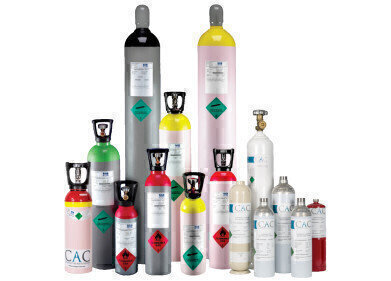Air Monitoring
Successful Emissions Monitoring with CAC GAS Specialty Gases
Jun 07 2022
A “greenhouse gas is any gas that has the property of absorbing infrared radiation (net heat energy) emitted from Earth’s surface and reradiating it back to Earth’s surface, thus contributing to the greenhouse effect. Carbon dioxide, methane, and water vapour are the most important greenhouse gases. To a lesser extent, surface-level ozone, nitrous oxides, and fluorinated gases also trap infrared radiation. Greenhouse gases have a profound effect on the energy budget of the Earth system despite making up only a fraction of all atmospheric gases.” (Source: https://www.britannica.com/science/greenhouse-gas).
These greenhouse gases are all considered to be contributors to climate change which in turn can lead to changes in ecosystems.
Australia’s very high level of emissions per person reflects the nation’s heavy reliance on fossil fuels as a primary energy source.
Australia had the highest greenhouse gas emissions per inhabitant of all OECD nations in 2019, at 21.63 metric tons per capita (Source: www.statista.com).
Stack gas, flue gas and fugitive emissions from oil & gas production, cement, power processing plants, pulp and paper, wastewater treatment plants, and landfills all emit greenhouse gases.
However, there is an increasingly strong drive to decarbonise across all industries and transition to a circular, low-carbon economy.
Carbon capture and storage (CCS) involves capturing, transporting, and storing greenhouse gas emissions from energy intensive industries, and then injecting the captured greenhouse gases back into the ground. CCS contains CO2 but may also contain trace levels of toxic chemicals such as CO, NOx, or SOx.
Energy from Waste (EfW) projects have the potential to divert immense amounts of material going to landfill and reduce harmful emissions, such as methane and CO2.
Thermal energy from waste is becoming a preferential option for treatment of residual waste to create clean energy and divert waste from landfills. This process captures landfill gas (methane) that is treated to generate electricity. In addition to creating electricity for homes, some companies experience cost savings as the electricity can be used in their own manufacturing and operational processes.
Bioenergy technologies like anerobic digestion also support decarbonisation and can produce clean energy. This process produces two valuable outputs – biogas (composed of methane, carbon dioxide and hydrogen sulphide) and digestate.
Whilst these processes can curb the production of greenhouse gas emissions, they still produce them, albeit it at reduced levels.
Critical to the success of emissions reduction is the ongoing or continuous emissions monitoring and analysis of these greenhouse gas emissions. Apart from any regulatory obligations, it is paramount that operators monitor their concentrations to ensure that there are no gas leaks that will cause health and safety risks. Monitoring and analysing also enables operators to take quick and effective corrective action when necessary.
As part of that process, high quality specialty gas /calibration gas mixtures are essential to ensuring that the gas analysers are measuring those greenhouse gas emissions accurately.
At CAC Gas, we assist companies across all market sectors by providing calibration and speciality gases for monitoring and analysing emissions. CAC Gas is also a global supplier of gas control equipment.
Digital Edition
AET 28.2 April/May 2024
May 2024
Business News - Teledyne Marine expands with the acquisition of Valeport - Signal partners with gas analysis experts in Korea Air Monitoring - Continuous Fine Particulate Emission Monitor...
View all digital editions
Events
Jul 30 2024 Jakarta, Indonesia
China Energy Summit & Exhibition
Jul 31 2024 Beijing, China
2024 Beijing International Coal & Mining Exhibition
Aug 07 2024 Beijing, China
IWA World Water Congress & Exhibition
Aug 11 2024 Toronto, Canada
Aug 25 2024 Stockholm, Sweden and online









.jpg)








